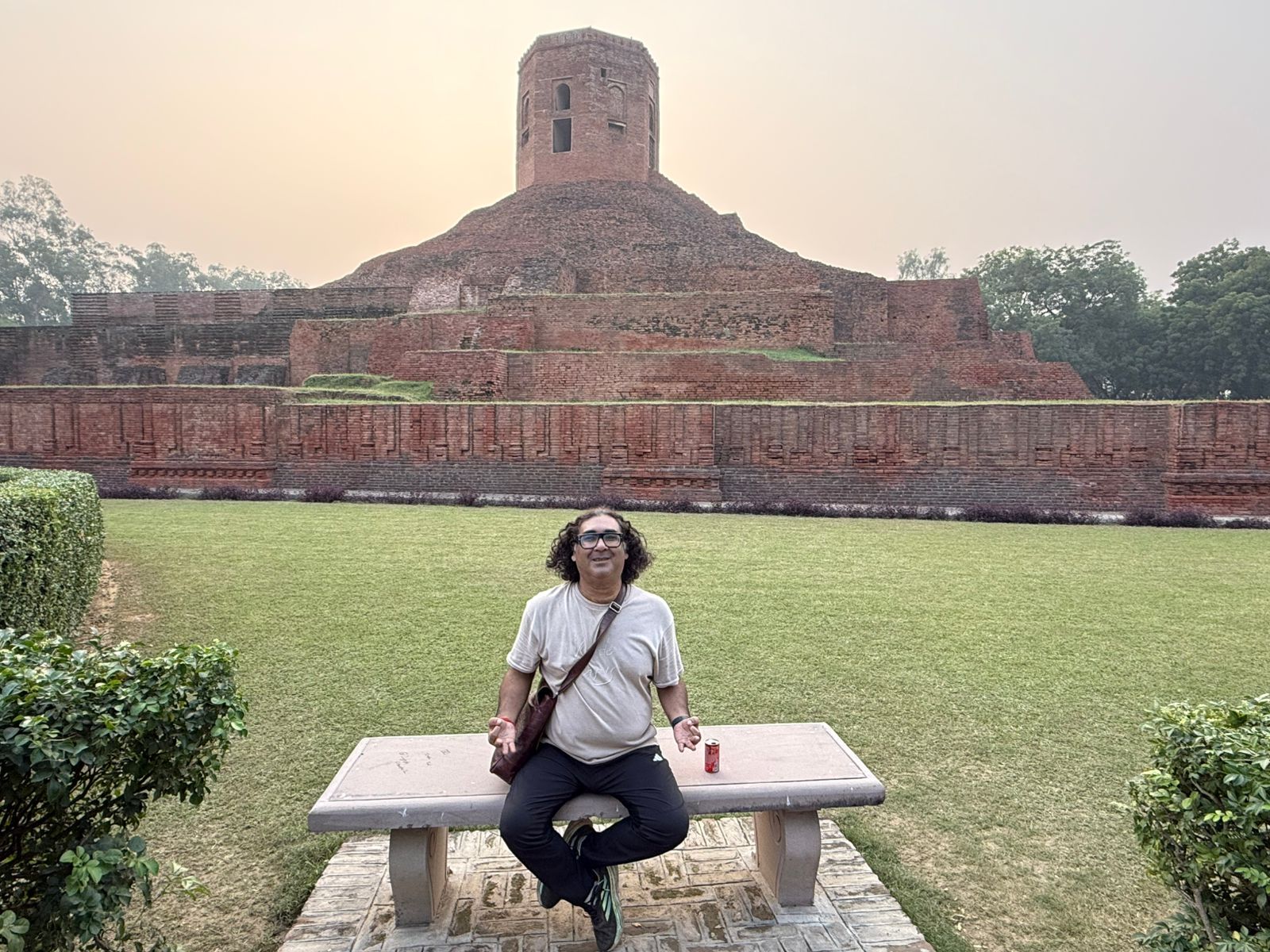The Chaukhandi Stupa is situated 8 km away from the Cantt Railway Station in Varanasi. It is a protected monument of national importance and was declared so in 2019 by the Archaeological Survey of India.
It was built during the Gupta period, in the 4th and 5th centuries, and is the site where Buddha met his first disciples. The stupa has a rectangular shape with steps leading upwards. It is made from red baked brick and is very strong and sturdy.
One of the unique features of the Chaukhandi Stupa is its massive rectangular shape atop a terraced plinth. This plinth is also rectangular, while the actual tower itself is octagonal. This architectural pattern is highly uncommon for the period in which it is believed to have been built.
Similarly, the mystery surrounding the visual style of the stupa is quite intriguing. Stupas associated with Buddhism are generally dome-shaped, such as the famous Sanchi Stupa. However, this stupa is distinctly octagonal, making it unique among Buddhist stupas.
The Chaukhandi Stupa
Even the celebrated Chinese traveler Xuanzang (Hiuen Tsiang) wrote about the stupa in the 7th century AD. The height of the stupa is 93 feet, and it is constructed entirely from red brick and stone. It has three diminishing terraces, each about 12 feet high and 12 feet broad. Each terrace is supported by an outer and inner wall, with several cross walls to reinforce the structure. The outer walls of the terraces are ornamented by a series of niches separated by pilasters. The images of the Buddha, deep in meditation, clearly indicate that the structure was built during the Gupta period. The octagonal brick tower crowning the stupa is a Mughal addition, erected in 1588 AD by Govardhan, the son of King Todarmal.
The stupa looks particularly stunning during the evening sunset. It is surrounded by lush green grass and lawns, where one can take an evening stroll while admiring the monument. Visitors can view the monument by paying a nominal fee of Rs 20 for adults.

















